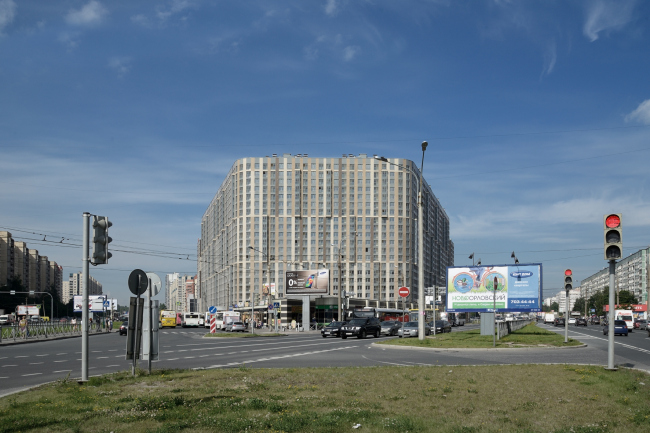
Residential complex “YE′S” © Eugene Gerasimov and Partners
"In my opinion, the image of a "wicker basket" or a "lath fence" that was intended here, came out quite convincing" - says Eugene Gerasimov. One must recognize this definition as a pretty accurate one, as the meaning of this house was, first of all, protecting from the city noise and grime a rather large (the total area of the plot is about two and a half hectares) territory inside the courtyard. The two buildings embrace the courtyard in a symmetric pentagon that bears a remote resemblance... to the soviet "quality sign": the horseshoe-shaped trapeze of the twelve-story house is turned to the Prosvescheniya Avenue and the sharp "arrow" of the merging streets, and the broad sixteen-story "book" of the apart-hotel closes the perimeter from the rear side of the complex. The courtyard has but three passages to it: two of them are situated at the spots where the side walls of the house and the wings of the apart-hotel meet, plus an arch in the "nose" part, through which one will be able to get inside the courtyard from the park at the arrow between the streets - in other words, the perimeter has a really "closed" nature, and it is the direct opposite of the windswept "stitches" of the neighborhood blocks.
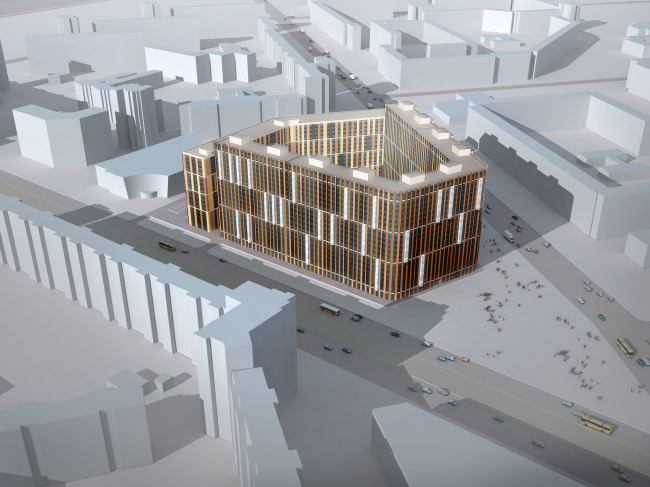
Residential complex “YE′S” © Eugene Gerasimov and Partners
The result looks a lot like "Stalin-style quarters", only larger. However, upon a closer examination of the surrounding neighborhoods, one will discover that the idea of a "super-quarter" was born here as early back as in the eighties: the panel "slab" houses, not as tall but sometimes of an even greater length, oftentimes make a turn, getting sometimes an L-shaped or even a П-shaped plan, and sometimes even form spacious squares, as if "dreaming of the old city" or protecting themselves against the wind. One way or another, looking at the plan, one may think that the idea of a giant quarter was there in it even earlier, only back then it was not taken to its logical conclusion. The Eugene Gerasimov house definitely explores the topic to the fullest: amidst the sloppy, and, in spite of all the previous efforts, very disjointed surroundings of the panel houses with an odd fraction of a later built shopping mall, this house is a fortress, a Norman castle that completes the busy road junction with its sheer self-sufficient mass. This house is means business; it makes its presence known in the space, organizing it with its reserved magnificence.
The facade pattern: the large grid of the verticals, like an aptly selected lady's blouse, helps to structure and unload, to a certain degree, visually the imposing volume of the complex that from many viewpoints (except for the main one) looks as if it was larger broadways than in its height. Mostly regular, and at times of the "French" type, the windows line up to form vertical arrays, alternating with the inter-floor inserts of a neutrally gray color, and at some places stand out as asymmetrically placed bay windows. As for the vertical bands of the walls between the windows, it is actually these bands that produce the "lath fence" effect, or, rather a pale fence with a large pixel pattern (partly imitating the play of light and shade) superimposed upon it, a pattern of brown, beige, and white (almost ivory) bands. Their ornament is interrupted by slim light horizontals that "bind" the "lath fence" of the house each six (and in the apart-hotel building each three) floors (thus in the former case the rhythm is made more relaxed, and in the latter case is made busier, which goes some way to conceal the height difference between the two buildings). At some points, the color of the vertical bands remains intact and it runs through the horizontal, enhancing its illusory quality and the ornamental quality of the pattern in general. In the places where the breadth of the bands is greater (for example, in the hotel's niche where the staircases are situated), the pattern takes on a truly pixel-like view, breaking up part of the surface. The play of these bands on the facades is all about trying to optically correct the volume but it also has a meaningful play to it: the massive volume of the "castle" in conjunction with "graphic" pattern of the "pale fence", just like one plus one, add up to give a Russian ostrog, a memory of the Russian north the way it was before Peter the Great (but then again, we have reasons to think that this allusion did not come about by chance).
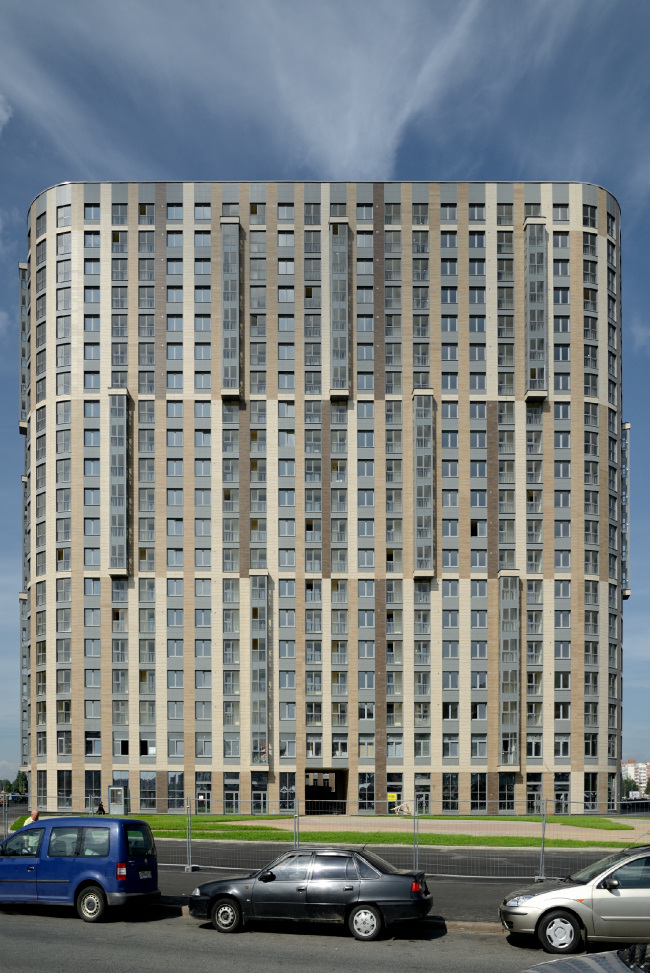
Residential complex “YE′S” © Eugene Gerasimov and Partners
Up above, over the two top floors, there is no horizontal binding (either a conditional entablature or a cornice), the pixel ornament is opened up into the sky, which enhances its likeness to, though very conditional, "polls" or, even though the image of the fence is not at all literal, this is rather an occasion for a geometric play that, by adding to the facades some slenderness and agility, turns this mass of square meters into an author's work - which was not so easy in the conditions of working with a comfort-class housing project (which, as we know is the top segment of the economy class; the house has in it an underground parking garage for 511 car stalls (for 1062 apartments), the whole ground floor is taken up by shops, cafés, and a spa center; also by a kindergarten; the apartments are sold turn-key).
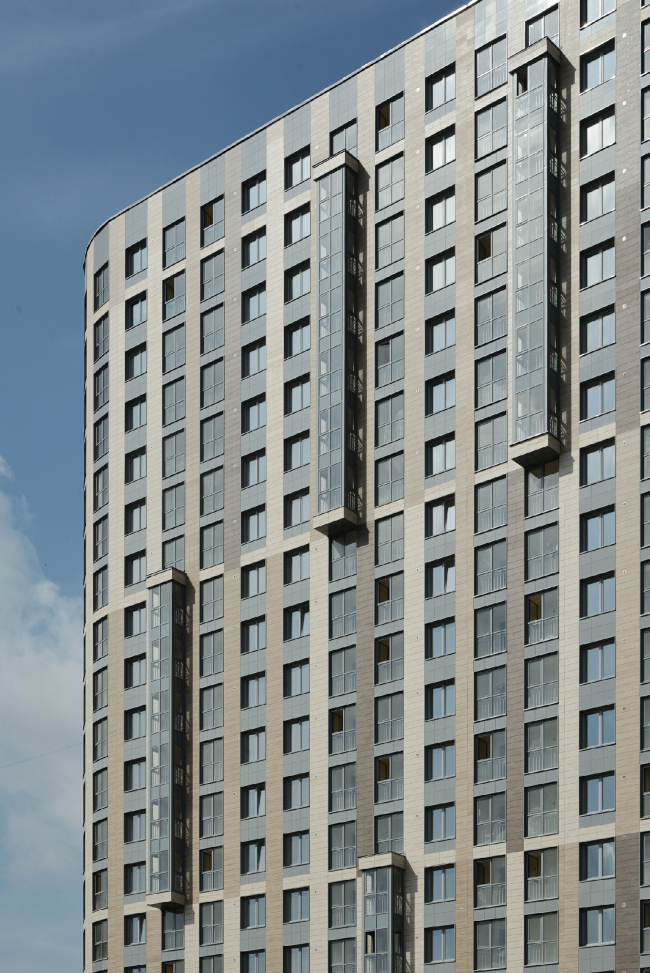
Residential complex “YE′S” © Eugene Gerasimov and Partners
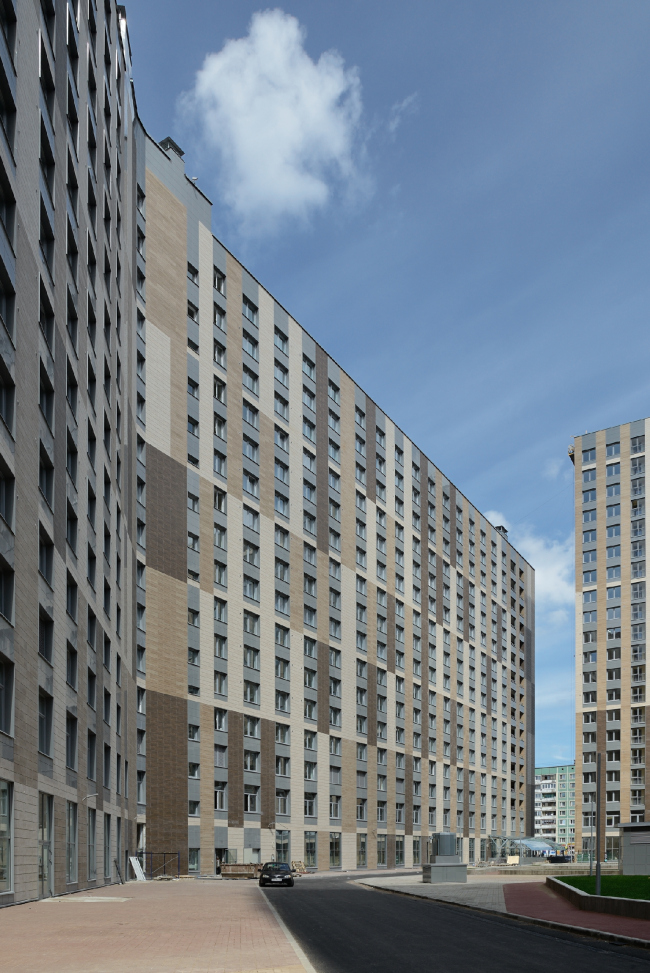
Residential complex “YE′S” © Eugene Gerasimov and Partners
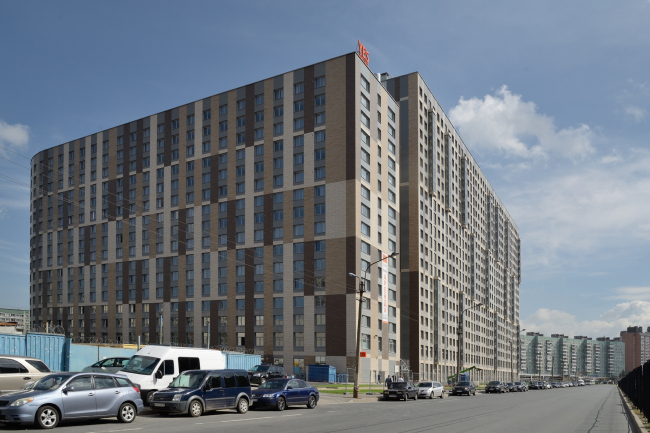
Residential complex “YE′S” © Eugene Gerasimov and Partners
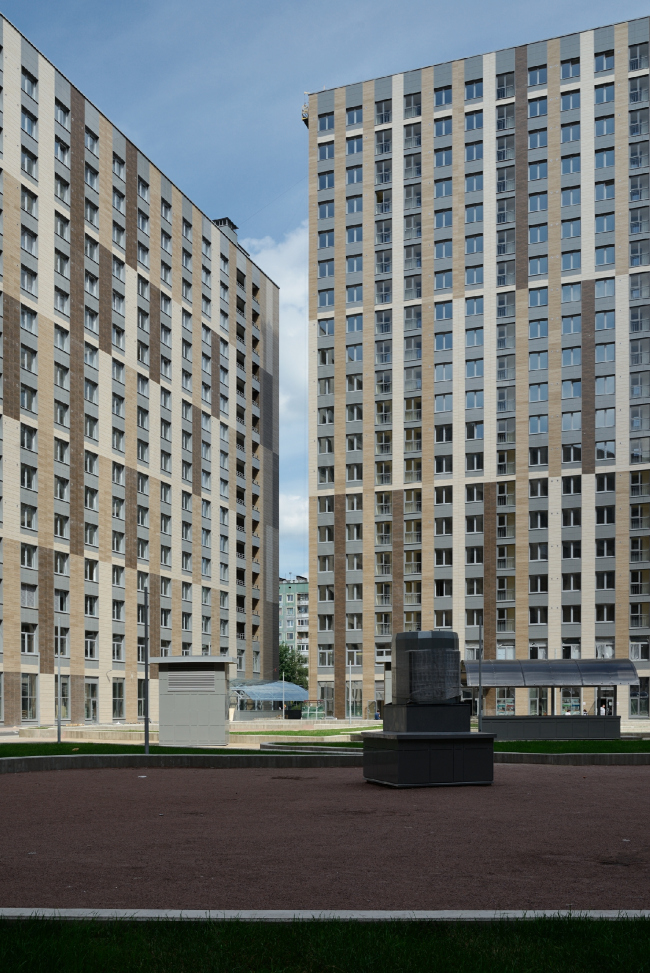
Residential complex “YE′S” © Eugene Gerasimov and Partners
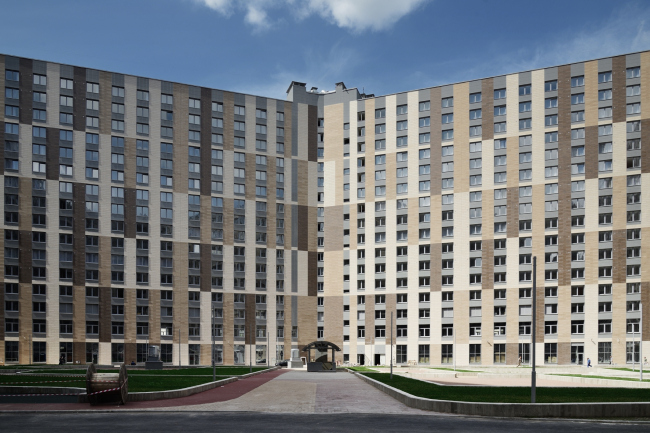
Residential complex “YE′S” © Eugene Gerasimov and Partners
For Eugene Gerasimov, the YE’S house is one of his first projects in the genre of "comfort class". "This is a pretty rigid segment of the affordable housing that incurs a lot of limiting regulations to it, ones that we had not really run into before - Eugene Gerasimov shares - But then again, the architect always has to work within the boundaries of some regulations, this is natural, or we would have lived in the environment of masterpieces, among Louvres and Eiffel Towers - which would not have been quite normal. There are no "bad" genres, and this one is no exception, one can also find here interesting things to do - especially, as in this particular case, when there is a developer that is ready to look for solutions together with us and is willing to be engaged in a dialogue with the architects".
The houses of comfort class, not too expensive, but still giving the architects an opportunity to go beyond the standard panel construction, became a common practice after the crisis of 2008, and now some of them, as we can see, are being completed. The genre that requires from the architect a strict observance of its rules, and, as a consequence, careful attention in connection with, probably, more effort (in this particular case, the architects developed about a dozen versions before the final one was approved) - one should recognize as useful and productive because, in spite of the limits that it sets, it still leaves the room for experiment. And, as a result, for example, for the advent of such a gigantic closed living area that hides from the city grime inside its very self.
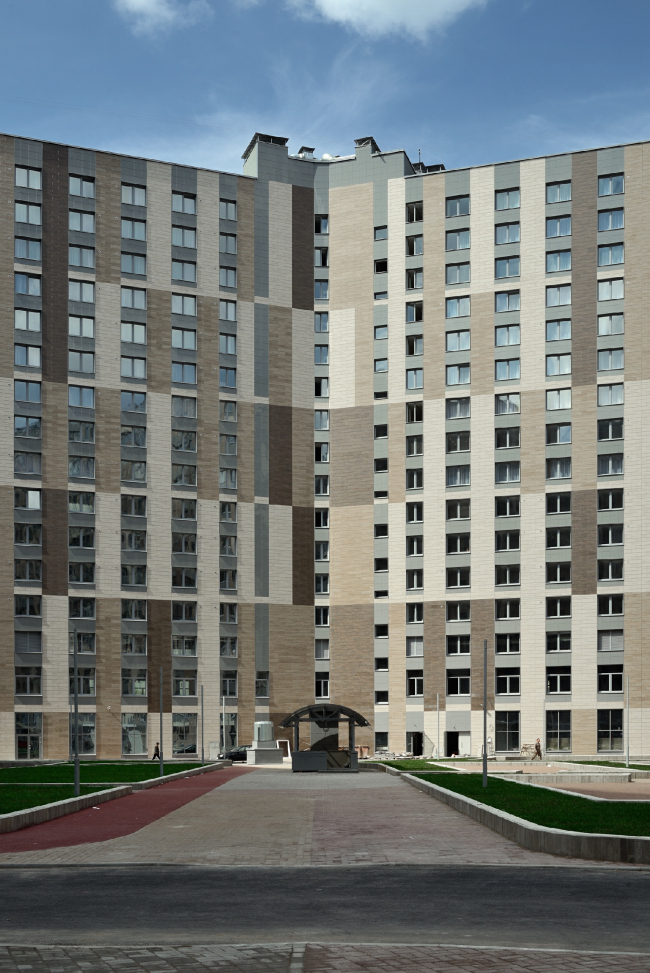
Residential complex “YE′S” © Eugene Gerasimov and Partners
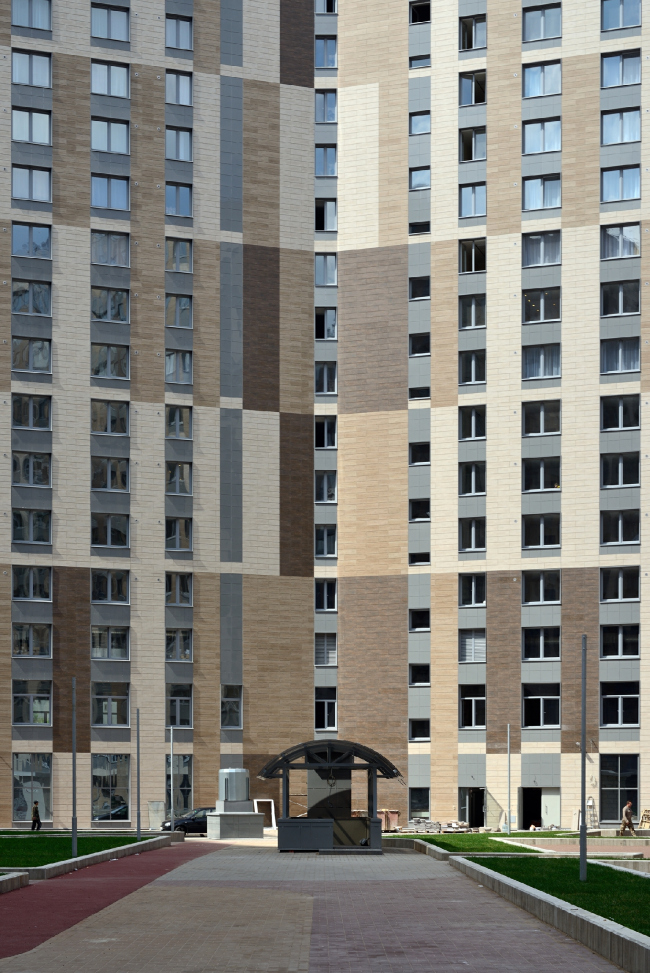
Residential complex “YE′S” © Eugene Gerasimov and Partners
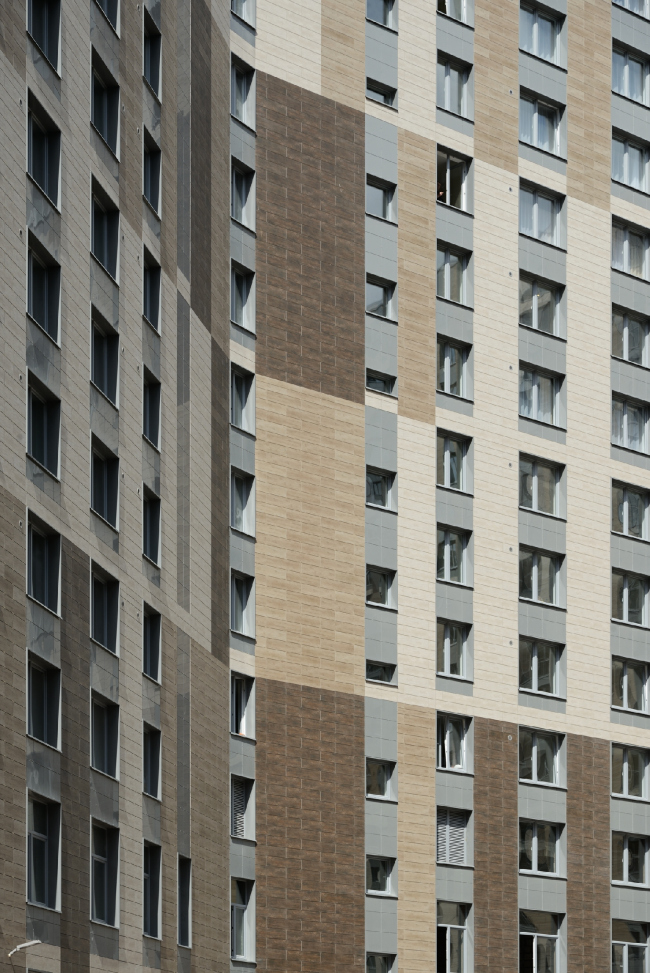
Residential complex “YE′S” © Eugene Gerasimov and Partners
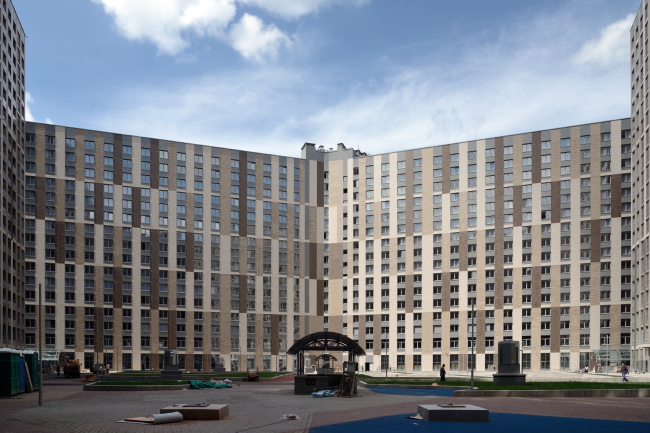
Residential complex “YE′S” © Eugene Gerasimov and Partners
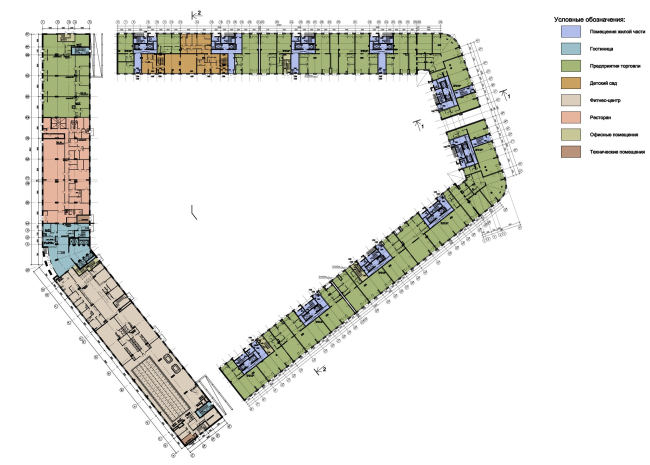
Residential complex “YE′S”. Plan of the ground floor © Eugene Gerasimov and Partners
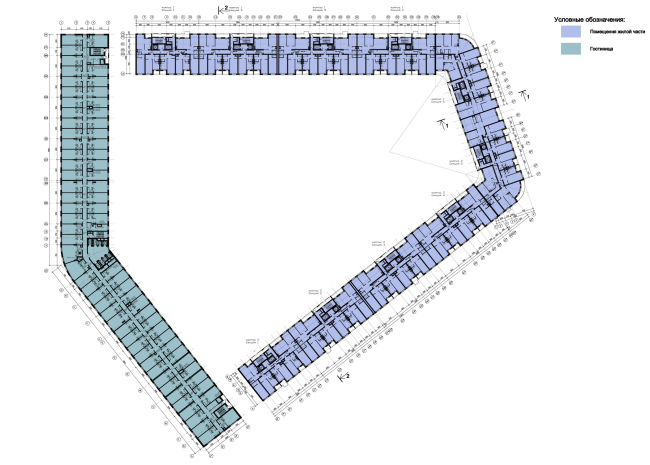
Residential complex “YE′S”. Plan of the typical floor © Eugene Gerasimov and Partners
Residential complex “YE′S” © Eugene Gerasimov and Partners
Residential complex “YE′S” © Eugene Gerasimov and Partners
Residential complex “YE′S” © Eugene Gerasimov and Partners
Residential complex “YE′S” © Eugene Gerasimov and Partners
Residential complex “YE′S” © Eugene Gerasimov and Partners
Residential complex “YE′S” © Eugene Gerasimov and Partners
Residential complex “YE′S” © Eugene Gerasimov and Partners
Residential complex “YE′S” © Eugene Gerasimov and Partners
Residential complex “YE′S” © Eugene Gerasimov and Partners
Residential complex “YE′S” © Eugene Gerasimov and Partners
Residential complex “YE′S” © Eugene Gerasimov and Partners
Residential complex “YE′S” © Eugene Gerasimov and Partners
Residential complex “YE′S”. Plan of the ground floor © Eugene Gerasimov and Partners
Residential complex “YE′S”. Plan of the typical floor © Eugene Gerasimov and Partners
















































